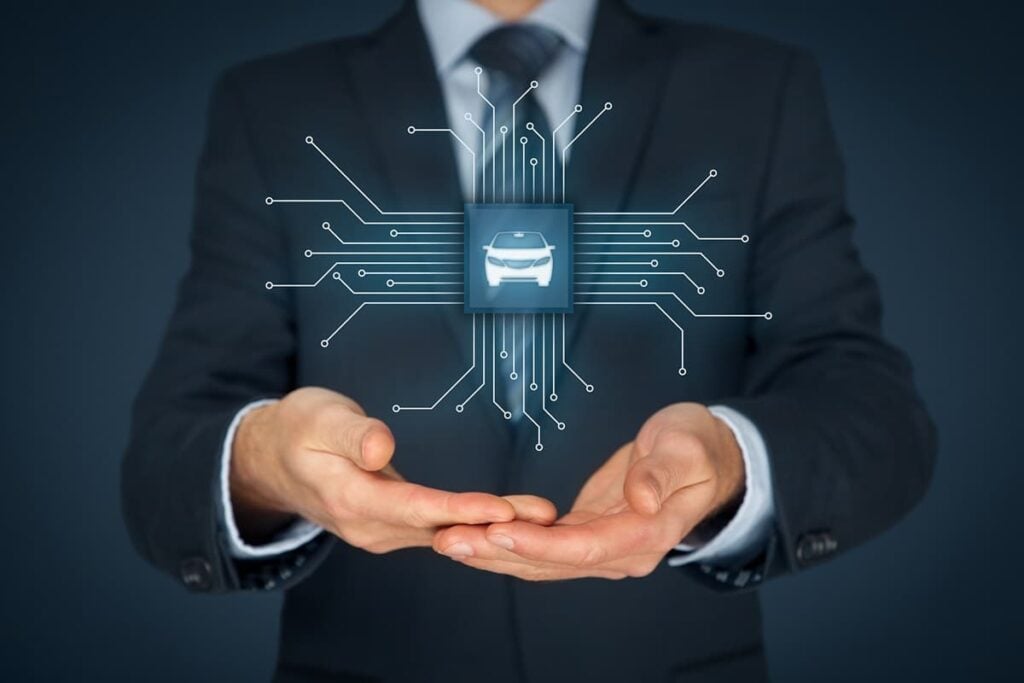Who is Velodyne and What is LiDAR?
Table of contents
Table of contents

The idea of an autonomous car is exciting as it promises to reduce traffic-related deaths, however, it also threatens to displace the +220,000 taxi drivers in the U.S. alone, not to mention other countries as well. While the fully autonomous car may still be +5 years away, we’re already starting to see autonomous vehicles commercialized and a fair number of startups working on autonomous electric buses that move people around seamlessly. When looking at “picks-and-shovels” plays on driverless cars, we’ve talked before about Mobileye, a company which uses a video camera and software algorithms that allow a car to “see”. Using video isn’t the only way for a car to see through. Another more effective way is through the use of LiDAR.
What is LiDAR?
If you are a regular driver then you would know that speeding can get you in a whole lot of trouble. Whenever you see a police car you instinctively brake, worried that he might be “clocking” your speed. There are typically two ways that a police officer can measure the speed at which you are traveling. The first is by using “radar speed guns” (also known as a Doppler radar unit) and the second is by using “LiDAR Speed Guns” which use lasers (LiDAR stands for LIght Detection and Ranging). The advantage of the LiDAR speed gun is that you can isolate a single car within a group of cars. That same technology is also used to provide the “eyes” for autonomous cars by using rotating laser beams to detect obstacles and avoid them. LiDAR is a key enabler for the evolution of Advanced Driver Assistance Services (ADAS) as seen below:
How does it work? Quite simply, it uses revolving lasers that shoot out in all directions to retrieve 1.3 million data points per second in a radius of 100-200 yards. These lasers then bounce back and draw a 3-D map of the surroundings along with detecting the speed at which objects are moving and the direction which objects are moving. Technically, if a LiDAR works properly it would be far more efficient in observing the driving environment than a human. One company offering LiDAR solutions for autonomous driving is Velodyne.
About Velodyne
Founded in 1983, Silicon Valley-based Velodyne is actually three companies that fall under the same umbrella offering audio equipment, marine solutions, and LiDAR hardware. Velodyne’s LiDAR subsidiary was formed in 2007 and made the news yesterday with Ford and Baidu committing $150 million of investment into the company, their first funding round yet. Velodyne’s newest LiDAR device seen below, the PUCK VLP-16, can provide a 3D view with a radius of up to 200 yards using 64 lasers:
In an article published by USA TODAY, Velodyne president Mike Jellen is quoted as saying that Velodyne’s LiDAR products are currently in use with 25 different self-driving car programs. Even Google uses Velodyne’s LiDAR technology. He also estimated that with 2-4 LiDAR pucks needed per car, annual sales for Velodyne could be between 200-300 million units. With the PUCK VLP-16 retailing at $7,999, the economics don’t make sense. If you’re building an autonomous car and you need to spend $16-32 thousand dollars on LiDAR alone, that car is never going to be affordable. The price of LiDAR is expected to dramatically fall, however, with Velodyne targeting a production version of their LiDAR sensors in the mid to lower $100 range by 2018. If Velodyne could sell LiDAR units at even $50 a piece, they’d still be raking in revenues of between $10-15 billion dollars according to Mr. Jellen’s estimates. With that much potential revenue to claim, you can be sure that other companies are also looking at getting a piece of it.
Other LiDAR Companies
Israeli startup Innoviz Technologies took in a $9 million Series A funding round to develop a $100 solid-state LiDAR (solid-state means no moving parts) which it hopes to have in production by mid-2018. Silicon Valley startup Quanergy has taken in around $35 million since 2012 in order to develop a LiDAR sensor at a $250 price point with deliveries to OEMs scheduled for 2017. New Mexico startup TriLumina has taken in around $27 million in total to develop semiconductor laser solutions, and recently announced their intention to develop a LiDAR solution for autonomous driving. Canadian company LeddarTech has taken in $16 million to develop a solid-state LiDAR solution with sample availability expected in 2018.
Conclusion
So there you have it. While Tesla previously labeled LiDAR as a technology that wasn’t needed for autonomous driving, it looks to be a key component for many other companies looking to build a driverless car. It’s hard to see how any sort of video solution could be used for driving, especially in the dark, when LiDAR is capable of “seeing” in any lighting conditions.
Sign up to our newsletter to get more of our great research delivered straight to your inbox!
Nanalyze Weekly includes useful insights written by our team of underpaid MBAs, research on new disruptive technology stocks flying under the radar, and summaries of our recent research. Always 100% free.
















